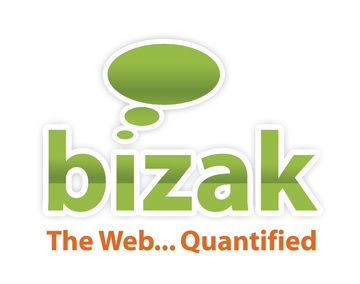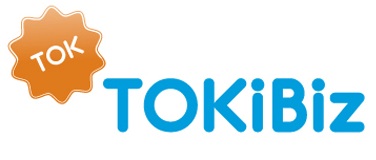Archive
Google Adsense or Advertising Model?
According to Bizak, in house advertising campaigns are more profitable for entrepreneurs than Google Adsense. Websites who implement Adsense have an EPV of $0.07 compared to sites who manage their own advertising who earn $0.17 per visitor. I actually think the Adsense EPV ($0.07) is a bit high and it will come down with more data. However, compare Adsense to subscriptions ($0.35 EPV), consulting fees ($2.29 EPV) and product sales ($10.64 EPV) and Google Adsense is a poor decision for startups and websites.
One benefit of Google Adsense is that it’s very easy to implement and the costs associated with that implementation are very low. Sites with Adsense have the lowest CPV (Cost per Visitors) at just $0.03 – In House Advertising is more difficult to implement and therefore have a CPV of $0.12. To no surprise product sales requires some of the highest startup costs with a $4.34 CPV – subscriptions are at $0.39 and consulting registers a $1.62 CPV.
Free or Not Free?
When starting a startup one of the most difficult (and essential) tasks is to determine the revenue model. Today there are a lot of great Web 2.0 applications – the technology is amazing and the progress is very exciting. However, as good as the technology is a lot of them lack any sort of revenue model. The majority of them rely on Google Adsense to cover the bills and I assume rely on prayer to get bought out. Google Adsense is not a revenue model!
Building tremendous technology can be very difficult but being able to monetize that application is often a daunting task – especially for the very technical. Daunting because figuring out what people will pay for with a subscription model is very difficult. First off an application that targets a younger, non-professional, market is going to have a very difficult time generating revenues. This younger market has grown up with the web and everything has been free for them. This age group has also become immune to advertising. They know how to ignore banners and they know what Google Adsense looks like – no matter how well it blends into your design and content.
As I mentioned above Google Adsense is not a business model – it also doesn’t generate significant income for the majority of websites. I feel that if you’re targeting a professional market and you’re using Adsense then it will work against you. If you need Adsense to supplement your revenues then your business is probably not thriving and therefore I will likely go somewhere else. There is of course in-house advertising which can be very lucrative, however, it requires a lot more work, traffic, creativity and a niche market.
So when building a startup a lot of the revenue model decisions come down to should we give everything away for free and use an advertising model or should we go with a subscription model? First off I’m not a fan of giving away services for free! Once you’ve given something away for free it becomes virtually impossible to ever charge for that service in the future. You can always start off with not free and then revert to free if subscriptions don’t work. However, you can’t go from free to not free!
One of the main reasons why I don’t like free is because it diminishes the value of your subscribers. It still amazes me that people will sign up for anything as long as it’s free. They might not like the service but they like free so they’ll register with your site. Obviously this boosts your subscriber totals, however, it doesn’t create loyal customers and the quality of those subscribers is low.
Now if that subscriber paid for your service then you know he/she really values your work, finds it useful and will likely use the service again. Obviously your subscriber totals will be lower but you’ll have revenues from loyal subscribers.
So with that comes my belief that there are two types of prices – Free and Not Free. There are some people who won’t pay anything for a service – they only want it if it’s $0.00. These people don’t care if it’s $4 or even $1, if it’s not Free then it’s not for them.
The second price is Not Free and this relates to people who value the service you built and will pay to use it. Unlike free, which gives you zero flexibility, not free comes with a range of flexibility. Depending on the service offered if you’re able to target the people who will pay Not Free for your service then the actual price you charge isn’t a determining factor. For example, if you sell high end information services to professionals then it’s not going to matter if you charge $500 or $900 for that service. This person wants the service you offer and price (within reason) won’t make a difference. Just like on the lower end, if they’re willing to pay $5 then they will likely pay $10.
In sum, applications built on a subscription and/or service model which targets professionals and/or a niche market are my favorites!
Video of this Post
An Increase in EPV (Earnings per Visitor)?

Just as I feel that higher gas prices will lead to new transportation inventions I also feel that a decline in web traffic (due to ineffective SEO) will lead to higher EPVs. As I’ve mentioned previously I believe “Adsense Has Become Worthless” which is not necessarily a bad thing since I feel it will weed out a lot of the spam sites. This in combination with a decrease in SEO traffic will ultimately force websites to create better business models that generate a higher earnings per visitor. If websites can no longer rely on heavy traffic to make their $0.01 EPV profitable then they must increase their EPV in order to maintain status quo.
For example, if a website receives 10,000 daily visitors and has an EPV of $0.01 then that sites makes $100/day. If that traffic suddenly plunges to 100 visitors/day then that site is now only earning $1/day. In order to maintain a $100/day income that website must now increase its EPV to $1.00. How do you do this? A better quality site, a focused target market, the addition of services to your revenue model, creativity, etc., etc., etc.
To determine your EPV, RPV (Revenues per Visitor), and Bizak Estimate visit the link below to use the Bizak Calculator:
Calculating & Creating Web 2.0 Profitability
 Bizak calculates the web’s profitability via tools like our EPV calculator to your right. We help startups create profitability by connecting them with business and investors.
Bizak calculates the web’s profitability via tools like our EPV calculator to your right. We help startups create profitability by connecting them with business and investors.
Through our advanced earnings calculators Bizak enables startups to calculate their profit/loss and marketing costs. Through our network of investors and business professionals startups are able to create profitability by both lowering costs and increasing revenues from new business and investments opportunities.
By aggregating this data we provide startups, entrepreneurs, investors and business with valuable statistics like the charts below.
EPV
Bizak, set to launch in January, weighs heavily on the essential key performance indicator (KPI) known as earnings per visitor or EPV. EPV is a very simple formula that tells you exactly how much you earn from each visitor.
The EPV formula is:
Earnings / Total Visitors = EPV
Bizak & EarningsPerVisitor.com will have EPV & CPV (Costs per Visitor) calculators for your benefit when they launch in January.

Website Launch!!!
This weekend we will FINALLY be giving TOKiBiz a website – well one that is nice to look at. Over the weekend we will be launching the new website for TOKiBiz designed by Fortunate 13 of Arlington, MA. TOKiBiz is based in Brookline Village, just steps away from Boston.
TOKiBiz: www.TOKiBiz.net



